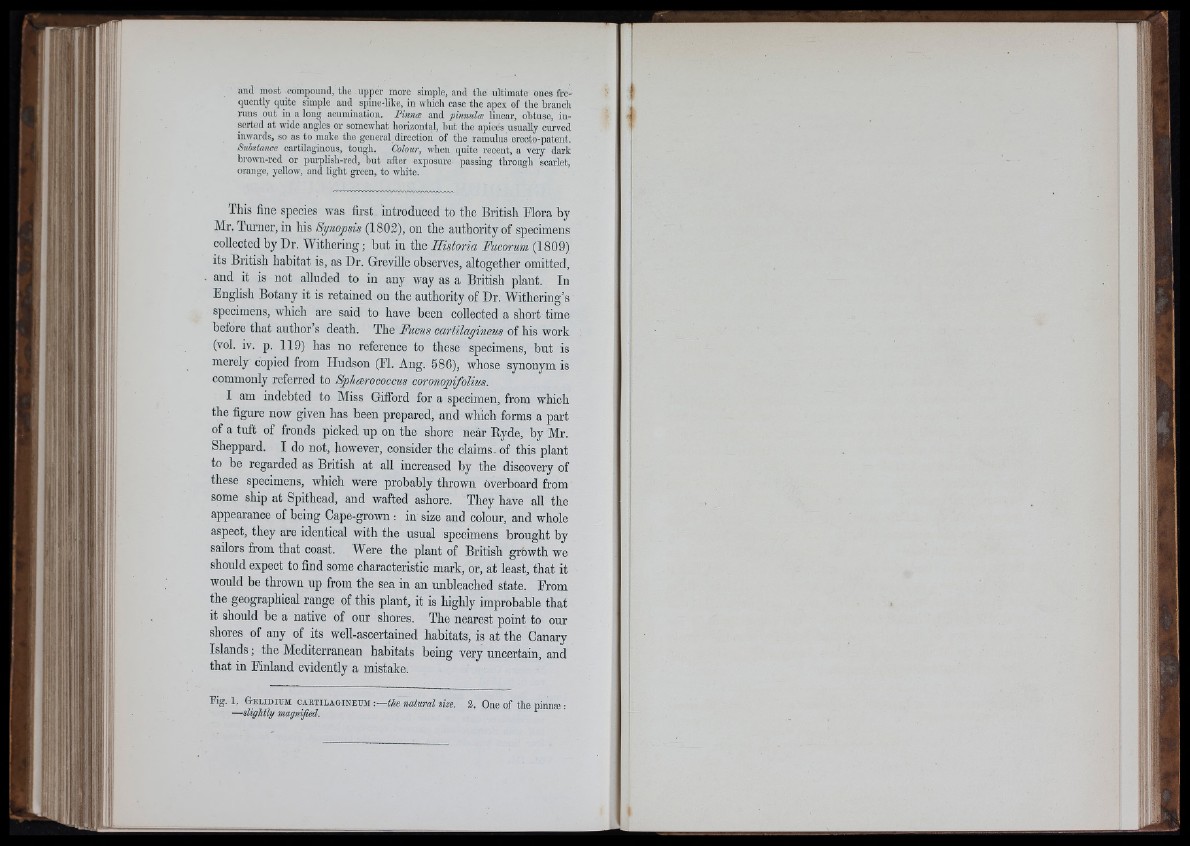
;md most compoimd, tlic upper more simple, and the ultimate ones frequently
quite simple and spine-like, in whicli case the apex of the brancli
runs out in a long acnmination. Pinnæ and pinnulæ linear, obtuse, inserted
at wide angles or somewhat horizontal, but the apices usually cui'vcd
inwards, so as to make the general direction of the ramulus erecto-patent.
Substance cai'tilaginons, tough. Colour, when quite recent, a very dark
brown-red or purplish-red, but after exposure passing through scarlet,
orange, yellow, and light green, to white.
This fine species was first introduced to the British Mora by
Mr. Turner, in his Synopsis (1802), on the authority of specimens
collected by Dr. Withering ; but in the Ilistoria Fucorum (1809)
its British habitat is, as Dr. Greville observes, altogether omitted,
. and it is not alluded to in any way as a British plant. In
English Botany it is retained on the authority of Dr. Withering’s
specimens, which are said to have been collected a short time
before that author s death. The Piicus cariilagineus of his work
(vol. iv. p. 119) has no reference to these specimens, hut is
merely copied from Hudson (El. Ang. 586), whose synonym is
commonly referred to Sphærococcus coronopifolius.
I am indebted to Miss Gifibrd for a specimen, from which
the figure now given has been prepared, and which forms a part
of a tuft of fronds picked up on the shore near Ryde, by Mr.
Sheppard. I do not, however, consider the claims, of this plant
to be regarded as British at all increased hy the discovery of
these specimens, which were probably thrown overboard from
some ship at Spithead, and wafted ashore. They have all the
appearance of being Cape-grown : in size and colour, and whole
aspect, they are identical with the usual specimens brought by
sailors from that coast. Were the plant of British growth we
should expect to find some characteristic mark, or, at least, that it
would be thrown up from the sea in an unbleached state. From
the geographical range of this plant, it is highly improbable that
it should be a native of our shores. The nearest point to our
shores of any of its well-ascertained habitats, is at the Canary
Islands ; the Mediterranean habitats being very uncertain, and
that in Mnland evidently a mistake.
Fig. 1. G e lid ium c a r t i l a g in e u m -.— ti
— slightly magnifiei.
3. One of the pinnæ :
f
i; .I’i
i k
l i
fi. 1
,1 «
i t r